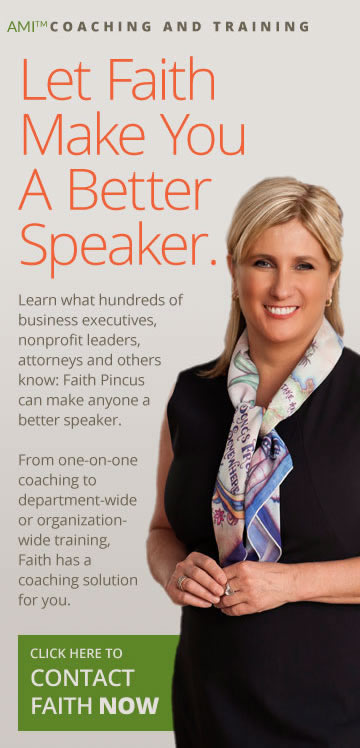Keeping up suspense … in a good way
We’re taught not to keep an audience hanging, but … well, let me tell you a story.
I once attended a presentation where the speaker used a very unusual technique in a presentation, but being the speak-geek that I am, I stashed it away and have put it to good use myself a number of times. Now I pass it along so more can give it a go — the secret is suspense.
It looked like the speaker had his work cut out for him when it was time for him to begin. This particular audience was full of members of a local chapter of the National Association of Speakers — a professional public speaker association — and we were all busy chatting with each other and catching up when his presentation began. But instead of calling for attention or announcing that he was going to begin his presentation, he began telling a very moving story. He told it well, using pauses, repetition and vocal variety to grab and hold our attention and create suspense.
We were hooked. The story was compelling, and he told it well. We weren’t thinking about listening — we were just listening. When he got to the climax of the story, he had us all on the edge of our chairs waiting to hear what happened next. Just as it seemed he was going to get to the big finish … he surprised us all by moving directly into his main presentation instead of finishing the story.
The verbal cliffhanger
You could hear a collective groan from the audience – we wanted to know how the story ended! But he had us hook, line and sinker. For the next 45 minutes or so we were captivated by his performance and when his speech was finally drawing to a close, he returned to his story and finished it for us. It was an emotional, powerful story and you could look around the room and see the impact it had on the audience. Even more importantly, the story he told had a direct correlation to his message, which made the emotional punch of the presentation that much more effective.
So write the word ‘suspense’ and toss it into your mental toolbox. It could come in very handy. But there are a few things you’ll want to keep in mind about getting the most out of this technique:
- Have a good, engaging story to tell that builds to a climax and leaves the audience desperately wanting to hear the end.
- Be a good story teller! Work on your vocals, your non-verbal cues, your presence and your body movement to help you tell the story well and with impact. (As I have said before, a speaker needs to look for opportunities to hone the skill of storytelling.)
- Make sure the story has some moral — some real-world application that relates to the purpose of your speech and helps you reinforce your message.
Once you’ve got the story, the skill and the point, you’ve won the war before the battle has even begun.
 Did you enjoy this article?
Did you enjoy this article?



